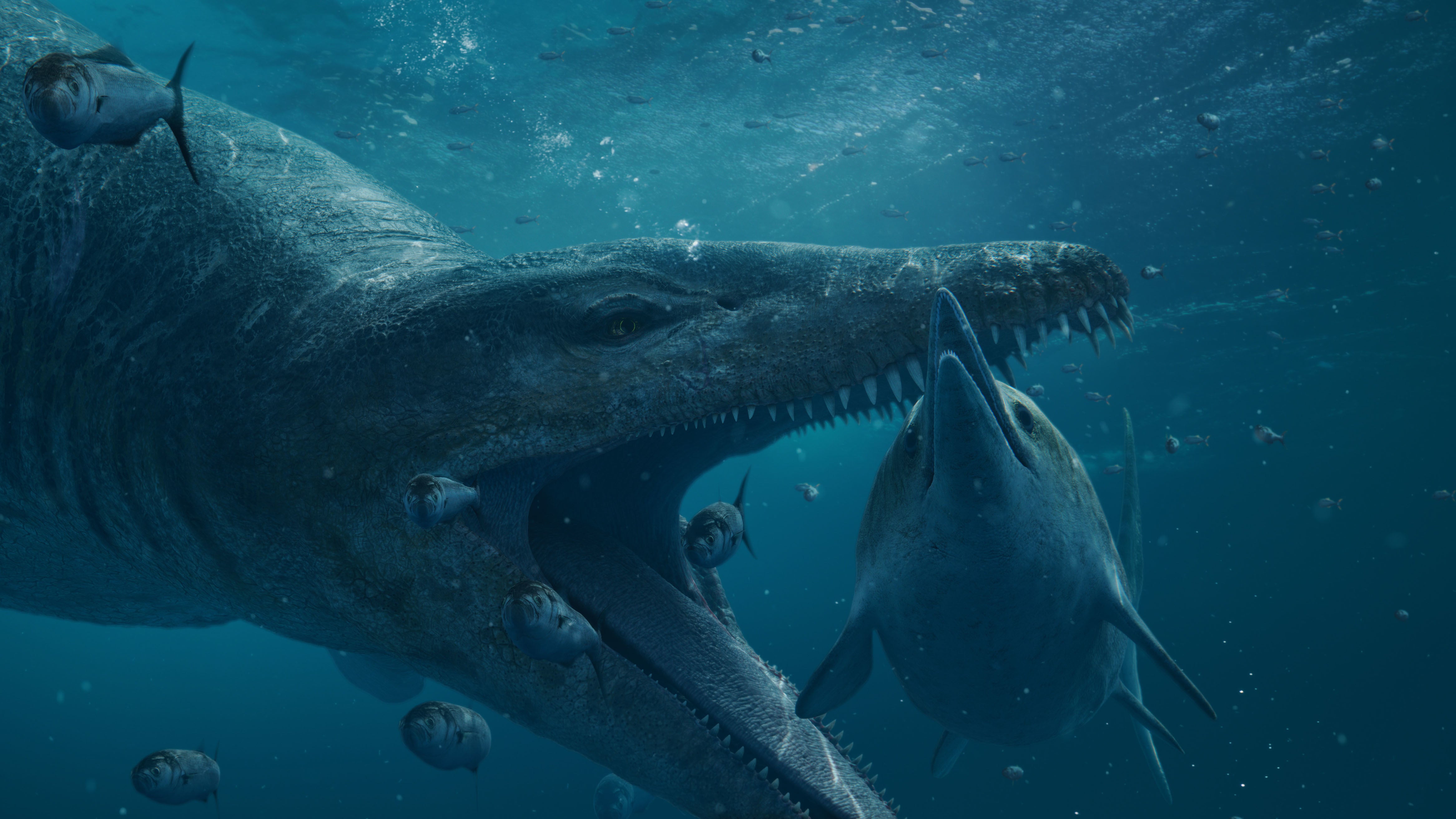
Sir David Attenborough has called the opportunity to unearth a “one-in-a-billion” fossil a “great privilege”, ahead of the release of a documentary chronicling its extraordinary discovery and excavation.
Attenborough & the Giant Sea Monster follows the British naturalist, 97, as he joins a mission to excavate the skull of a fearsome monster“who ruled the seas during the period of the dinosaurs” from a cliff face in Dorset.
The one-off BBC documentary, which will air on New Year’s day, is about the discovery of the skull of a pliosaur, one of the world’s most dangerous predators.
It begins with a perilous rescue mission, as the skull – weighing over half a tonne – is carefully removed from its resting place 12 metres up in the White Nothe cliffs, on the Jurassic Coast, Dorset.
“It looked as though it was going to be one of the most complete skeletons ever found,” the British TV legend said. “The head was only part of it, and that was up in the cliffs. And the body itself, being about the size of a London bus, extends into the cliff.
“The decision had to be taken that we would go for the skull, because that is where all the information lies,” he explained the significance of discovering the pliosaur’s skull, as a way to deduce significant information about “what it fed on, how it could move”.
In the second half of the hour-long documentary, Attenborough, alongwith a team of paleontologists and scientists, examined the remarkable fossil with state-of-the-art computer generated imaging (CGI) and CT scans.
Sir David Attenborough onboard a boat while filming near White Nothe cliffs, on the Jurassic Coast, Dorset.— (PA)
Attenborough described the thrill of seeing the pliosaur brought back to life via modern-day technology as “exciting and dramatic”.
“I’ve worked on dinosaurs before, but there’s a sort of double whammy in this one because not only are you doing that but you’re doing it on something that’s only just been discovered,” he added. “So it’s really saying something new and exciting and dramatic.”

He added that it was a “great privilege” to examine the pliosaur’s “extraordinary” CT scans, which revealed a surprisingly detailed network of blood vessels and nerves.
“We are, I suppose, accustomed to seeing X-rays of our own bodies, but to do it from a great lump of stone!” the legendary British presenter remarked. “If you’ve got some sort of medical problem they could do it in two or three minutes of exposure, but this took five days or something.
“It was a great privilege.”

The Leicester-born Attenborough, who began collecting fossils when he was eight, added he has “never lost the romance” of it.
“I’ve never got over it really. It’s very romantic,” he continued. “I mean, people talk about science, the cold, calculating eye of science, which of course you have to have, but it doesn’t prevent you from having romance as well.”
Last year, Attenborough said he was “delighted” after a 560-million-year-old fossil of the earliest known animal predator was named after him.
The rare specimen, which has been named Auroralumina attenbouroughii, was found in Charnwood Forest near Leicester, where the rocks date back 600 million years.
Reacting to the recognition, he said: “When I was at school in Leicester I was an ardent fossil hunter.
“The rocks in which Auroralumina has now been discovered were then considered to be so ancient that they dated from long before life began on the planet.
“So I never looked for fossils there. A few years later a boy from my school found one and proved the experts wrong.
“He was rewarded by his name being given to his discovery. Now I have – almost – caught up with him and I am truly delighted.”
Attenborough & the Giant Sea Monster will premiere on BBC One at 8pm on Monday 1 January.







